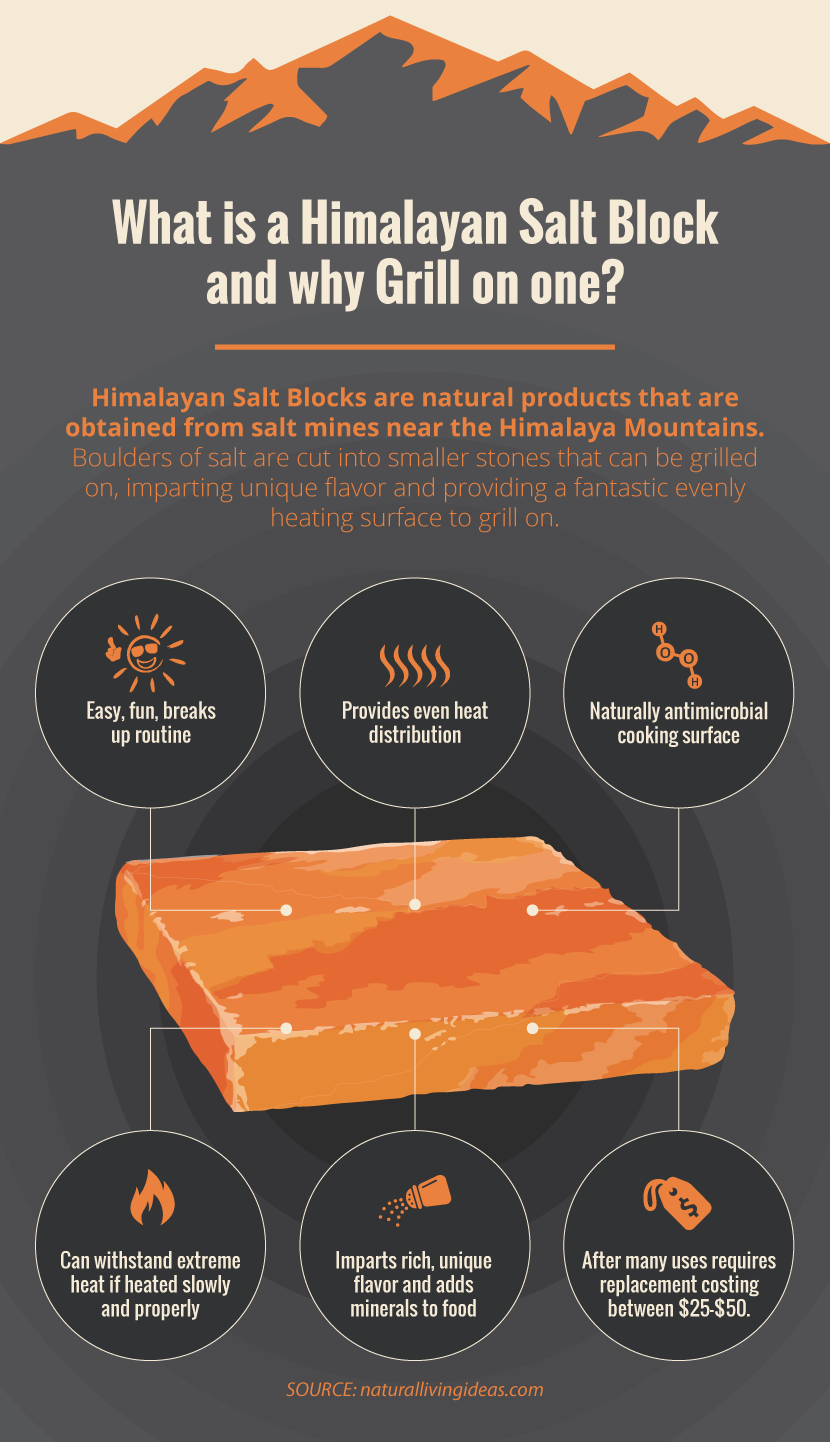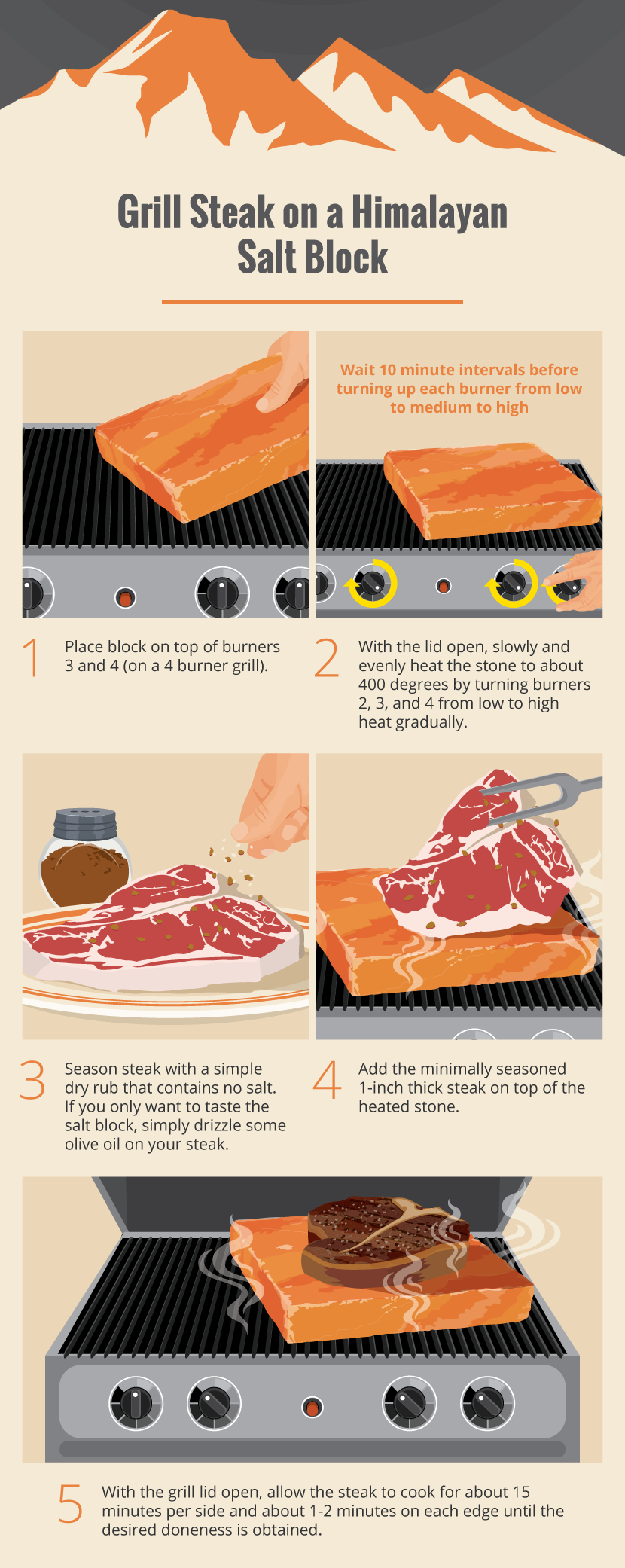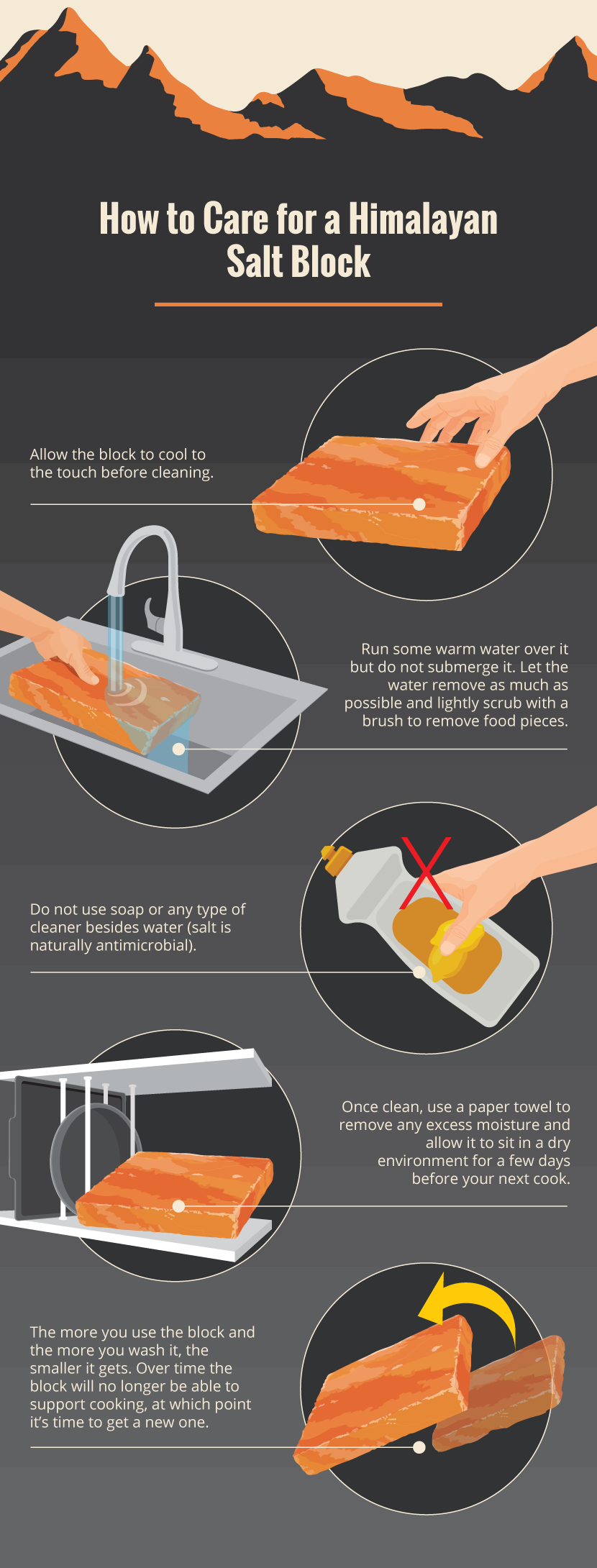Grilling on a Himalayan Salt Block
Far over on the other side of the world, near the Himalayan mountains in Pakistan, there exist deep mines full of glorious and beautiful pink salt. The walls and tunnels are all made of it, and miners excavate the salt using methods passed down through generations. Then they pass off the boulders to manufacturers with the cutting equipment and grinders to create the actual salt blocks. Lucky for us, somewhere along the way, the brilliant idea of grilling on a salt block was conceived. Cooking on a salt block provides subtle but rich flavor and a wow factor that will take your BBQ to the next level.

First of all, you might wonder, why grill something on a block of salt? I have a couple of answers for you. The most important is that it’s really easy to do and gives you a delicious meal. And as you’ll see below, some of the rules you need to follow help prevent overcooking or burning food. The temperature and method of grilling (with the lid open) let you cook a steak for longer than you would if you were using direct-heat fire. You also get amazingly even distribution, with fewer “hot spots” and no flare-ups, which can scorch meat. Another reason this method is so cool is the subtle yet rich flavor imparted to your food. It’s a mild saltiness with a clear richness, thanks to the additional minerals present in the block. Lastly, how cool do you look grilling on a gorgeous block of pink salt?! It’s the ultimate grill-master experience and can certainly break up your routine.

What’s the key to grilling on this block of salt? Heat it up slowly. For that reason, I suggest using a gas grill with multiple burners. The salt block is natural, so it might have tiny areas of moisture trapped inside that if heated too quickly will shatter it. Slow and even preheating will stabilize these areas and possibly enhance the release of moisture, so you will be grilling on a dry block that is much less likely to crack.
About an hour before you are ready to grill, place the block of salt on the grate over burners 3 and 4 (on a four-burner grill). Begin with the lid open, and turn burner 2 on high for 10 minutes. Next, turn burner 4 on low for 10 minutes. Then turn burner 3 on low for 10 minutes. You see the pattern here? We are slowly introducing heat by turning the burners on one at a time. Next, turn burner 4 to medium for 10 minutes. After that, turn burner 3 to medium for 10 minutes. Now you are ready to turn burner 4 on high. After 10 minutes, do the same for burner 3. By now, you should have burners 2, 3 and 4 roaring with high heat with the lid open. An infrared thermometer should register near 400 degrees on the block (depending on the intensity of your grill and the weather conditions).
Once the stone is heated, you are ready to grill. I’ll illustrate the process by discussing how to cook New York strips (about one inch thick). The general plan is to put the steaks on the salt block for about 15 minutes, flip over for another 15 minutes, and then turn them on their sides for a minute or two each. When the internal temperature is to your liking (e.g. 145 degrees for medium rare), you are finished.
Because you are grilling on salt, I suggest using a simple dry rub that contains no salt. If you want to taste only the salt block, just drizzle some olive oil on your steak. If you want a little bit more flavor, I suggest freshly ground black pepper. Any more than this, and you might miss out on the imparted flavors of the salt block.

After you are finished grilling your steaks, turn off the grill, and leave the lid open to allow the block to cool to the touch. Cleaning and caring for the Himalayan salt block is quite easy if you follow some simple rules: no soap, no cleansers, be careful, and use warm water and a sponge or soft brush to remove any food pieces. Once you are able to handle the block, pour some warm water over it, but do not submerge it. Let the water remove as much as possible, and for any pieces that are stuck, lightly scrub with a brush. Salt is naturally antimicrobial, so you don’t have to worry about getting every microscopic piece of food off the block. Once it’s clean, use a paper towel to remove excess moisture, and allow it to sit in a dry environment for a few days before your next cook. The salt block should last for many uses. However, the more you use it and wash it, the smaller it will get. Over time, it will no longer support cooking. Lucky for us the blocks are only about $25 to $50 dollars, so they are quite easy to replace.
Grilling on a Himalayan salt block is a fun way to add unique flavor. The mild but rich taste breaks up your grilling routine, and with careful attention to the temperatures, you can safely grill on a beautiful piece of pink salt that provides fantastic, even heat distribution. So go ahead, and try grilling a steak on a Himalayan salt block; you will be thrilled with the results!
Embed the article on your site

























































